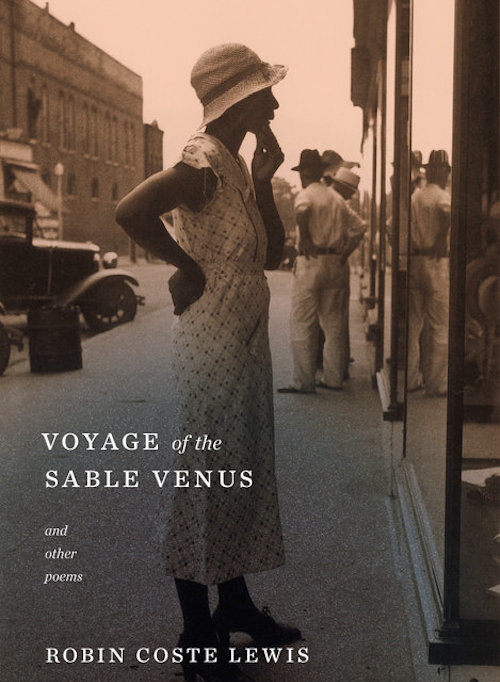Robin Coste Lewis's Voyage of the Sable Venus Reviewed at The Rumpus

We'll leave off the week with a thorough consideration of Robin Coste Lewis's National Book Award-winning title, Voyage of the Sable Venus, as reviewed by Diana Arterian at The Rumpus. Arterian reads the book as nothing short of an epic tour de force where, in the words of Coste Lewis's Buddha, "'Everything’s fucked up. Everything’s gorgeous' so neatly traces my pendulum-like emotional response to the poems in this collection. For while this book compellingly and terrifyingly documents the racist patriarchal systems, particularly intersectionality à la Kimberlé Crenshaw, in our modern society (and how those that go way—way—back), Lewis does so with a remarkable hopefulness, and in the face of what would make most rage and/or collapse." Arterian gives us a sweeping overview of the book, its structure and themes:
Voyage of the Sable Venus contains three parts. The second (titular) section is conceptual, using titles and/or descriptions of Western art objects that include the black female figure from 38,000 BCE to the present, in order to explore how these forms were “used” in art. Lewis provides a prologue to these poems, laying out her constraints and (with a light touch) her discoveries, including “because black female figures were also used in ways I could never have anticipated, I was forced to expand that definition to include other material and visual objects, such as combs, spoons, buckles, pans, knives, table legs.” Thus making, at least this reader, consider the “work” the black female figure was forced to do not just in the physical realm, the canvas, or in sculpture, but in the quotidian domestic tool—she held belts together, she combed hair. Another discovery was many curators’ decision to remove titles “such as slave, colored, and Negro…and replace these words instead with the sanitized, but perhaps equally vapid, African-American.” Lewis unsanitizes them for us to show us the dirty truth. In addition to using titles of works by oppressors, Lewis smartly includes works by black women and/or queer artists, allowing space for those voices as well. With that, we move through time and space via these artworks, and thus the many horrifying tropes the black female body has been ascribed through the ages. This includes the body in pieces (“Heads and Busts / Headless-Footless-Armless”) while also sexualized (“But with a Strong / Incised Vaginal // Opening”). We read the physically harmed body, the bound body, the body carrying bounty/goods such as fruit, the lies about happy black/white relations. In each Lewis often jams titles/descriptions up against one another and—though the titles remain unchanged—gives us new narratives and turns with alterations to punctuation and space. “Isis” and “Aphrodite” become “I Sis Aphro / Dite” (56). Or, to powerfully change (yet simultaneously point to) the terrible reality: “Negro man strapped to a ladder, Being. / Lashed” (720).
Head to The Rumpus to read the review in full, including some choice close readings and further insights.


